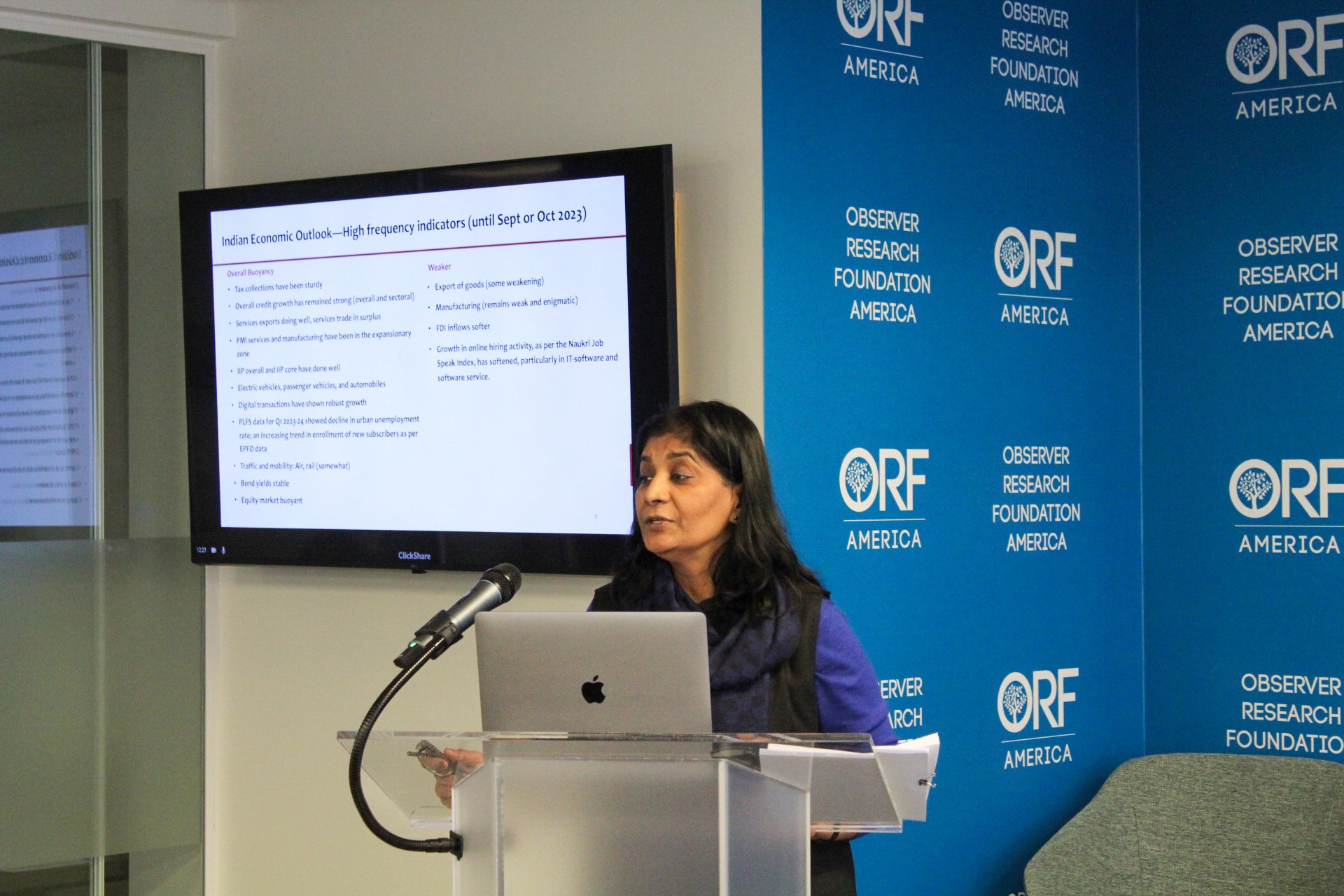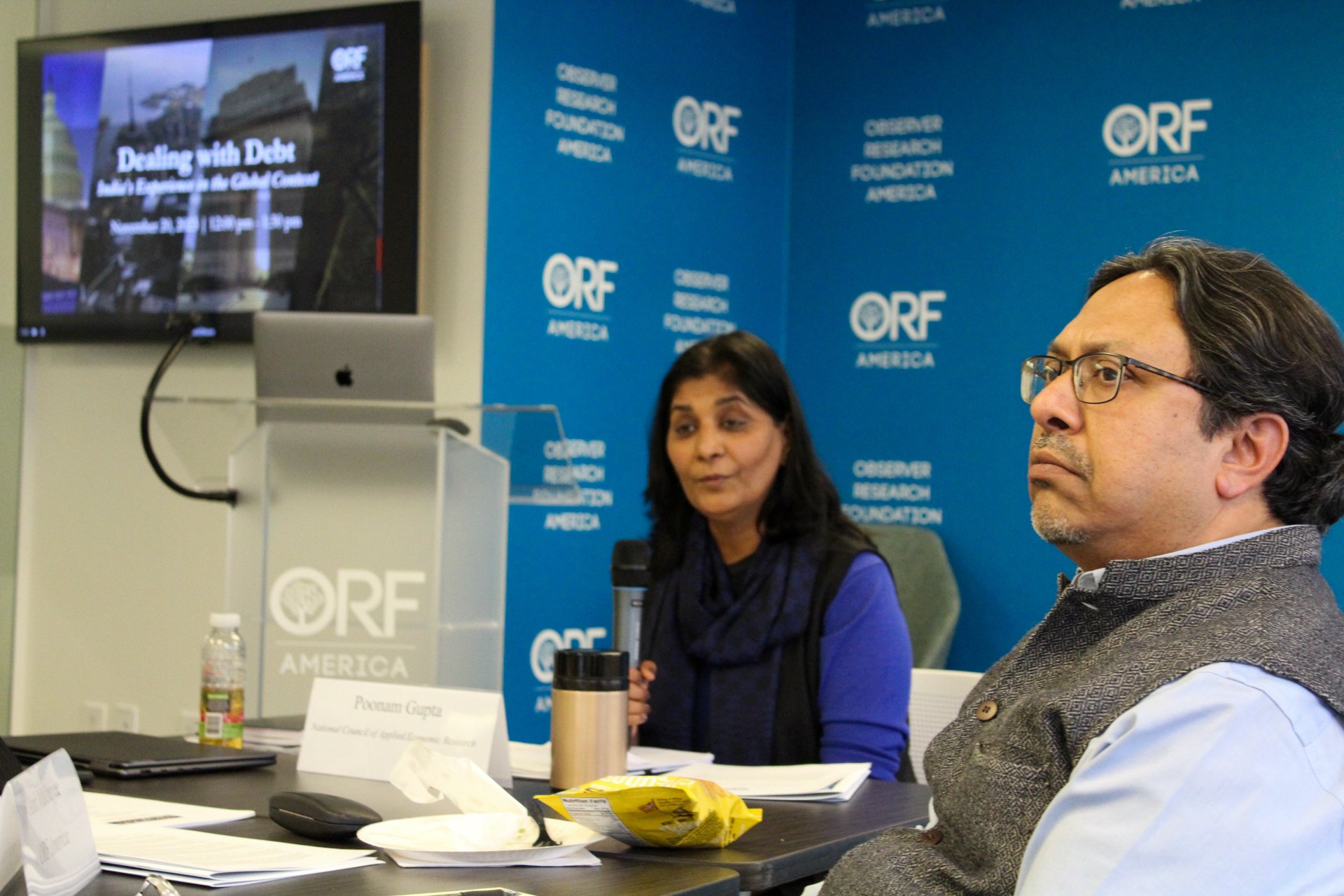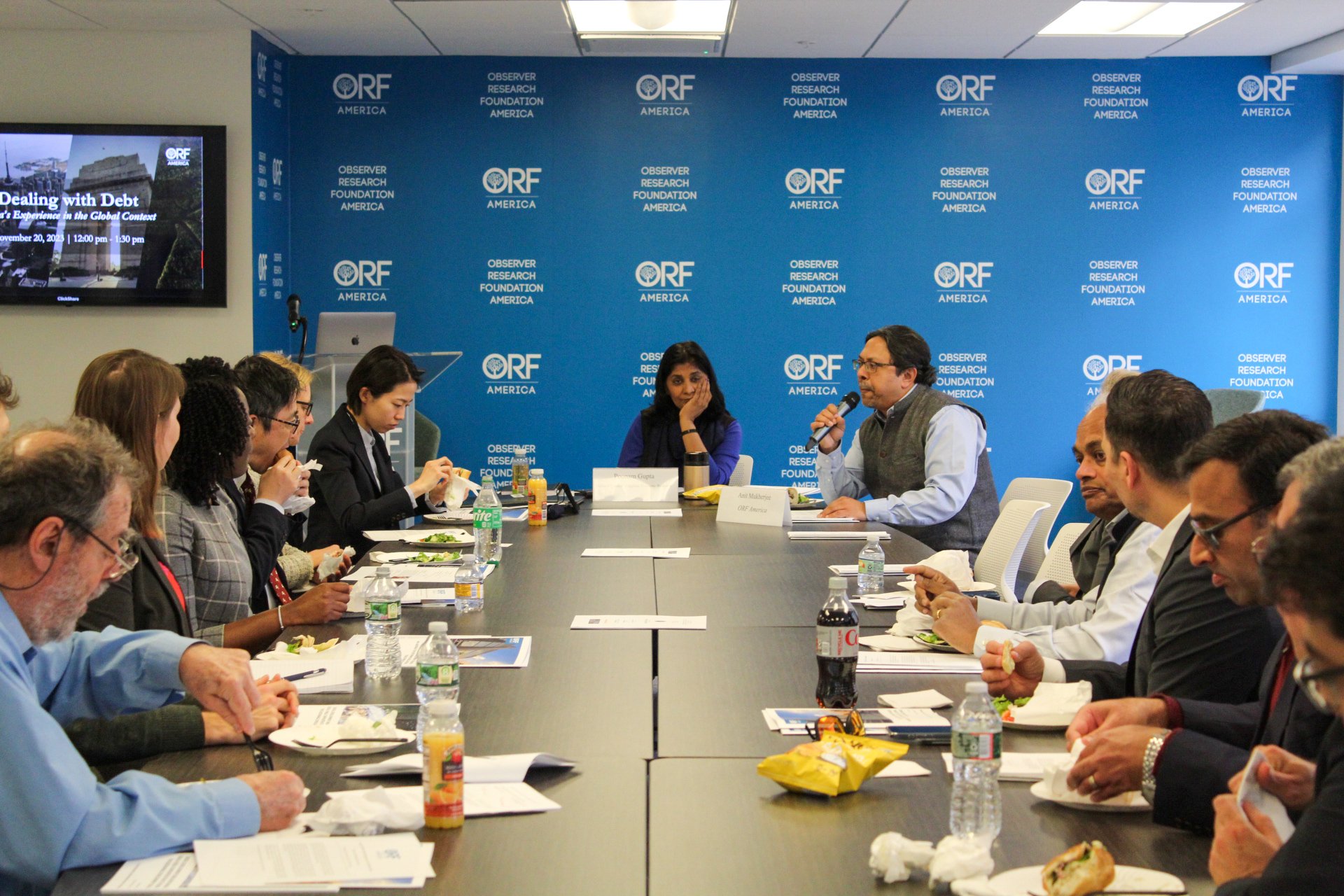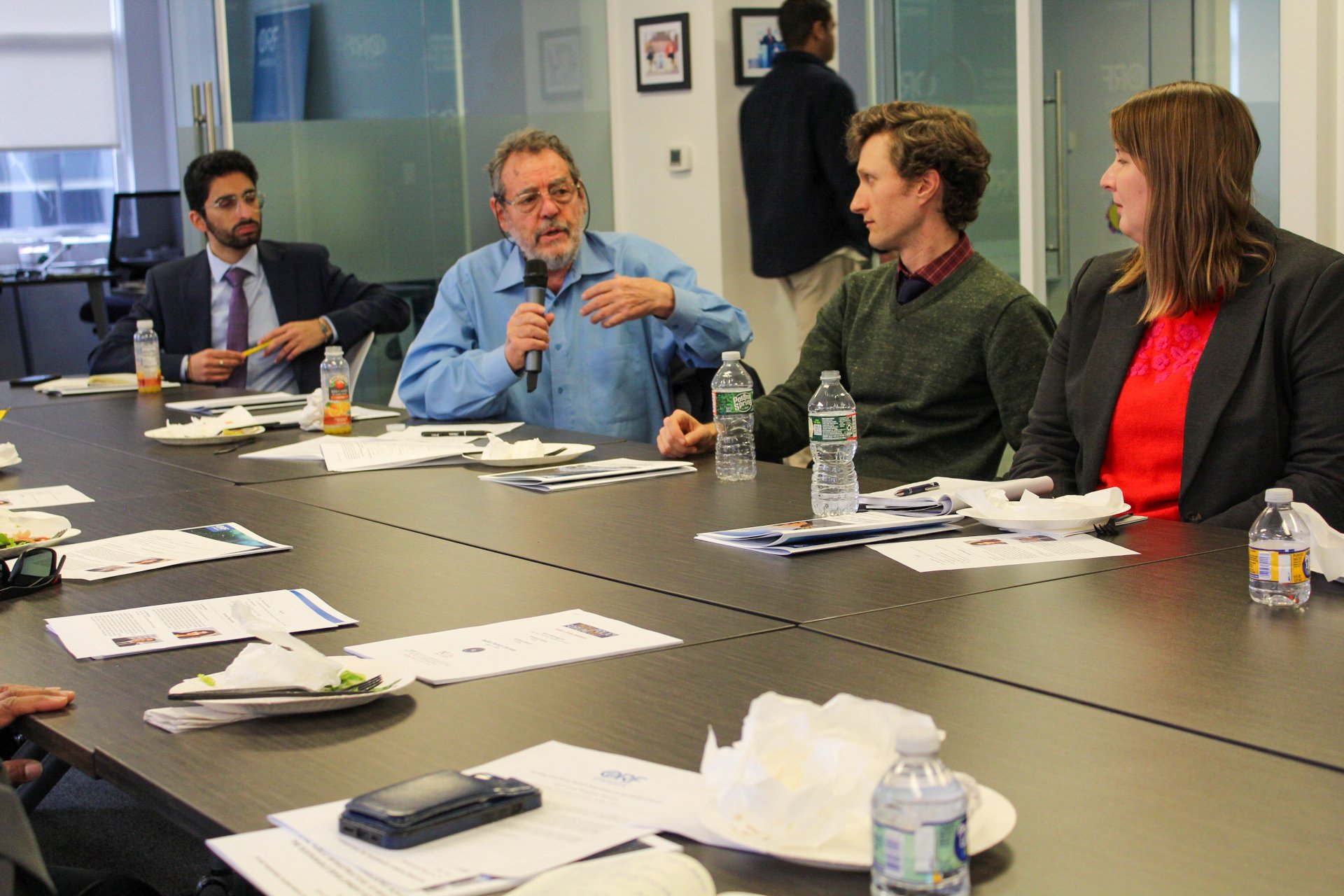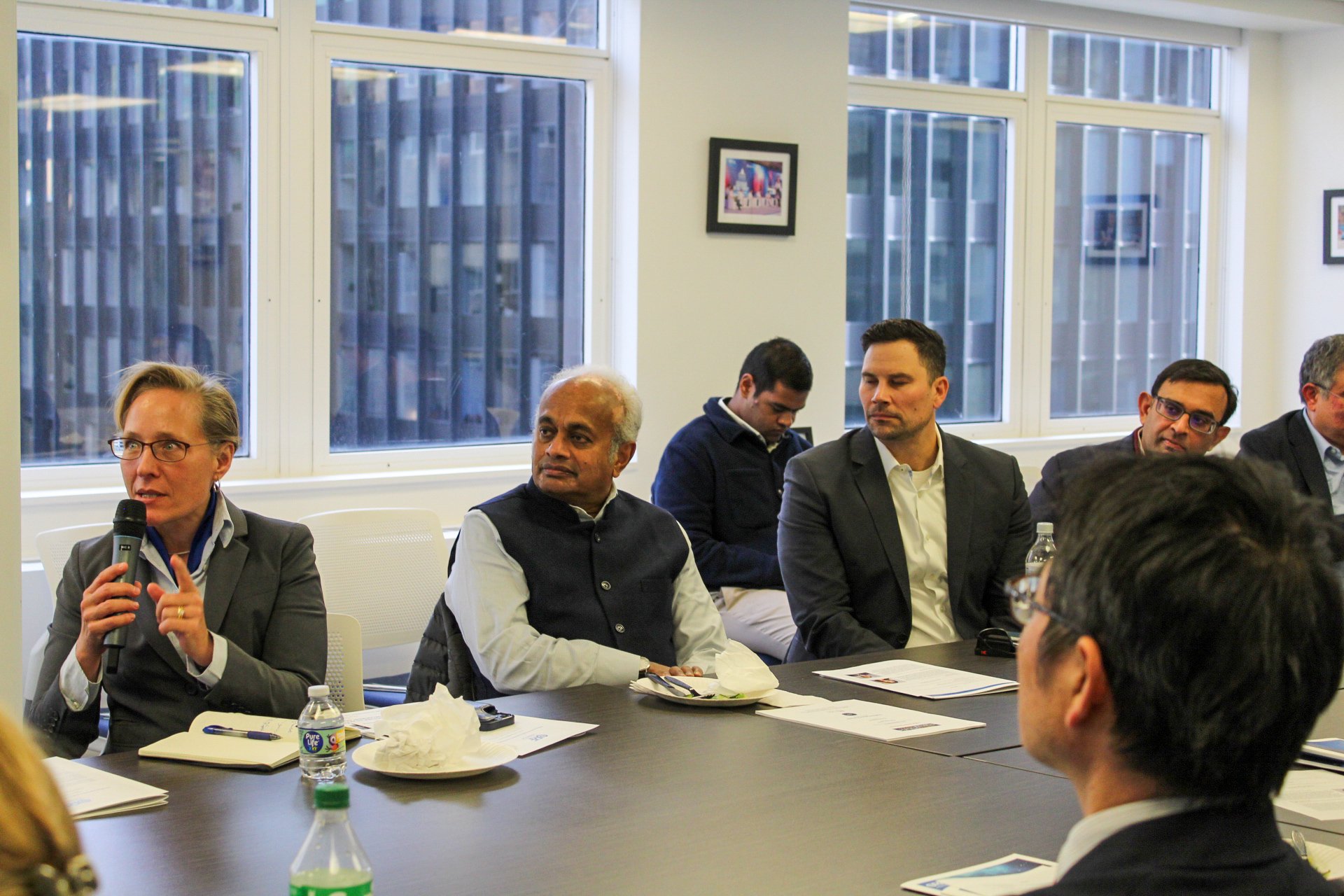Despite recovering from the lows of the pandemic years, the global economy continues to face significant structural challenges emanating from climate change, geoeconomic fragmentation, and stretched public finances. The resulting debt crisis is particularly becoming a critical challenge for policymakers in the Global South and needs urgent attention. As the fifth largest economy, India’s macroeconomic performance is critical for global stability and therefore of considerable interest for policymakers, analysts and investors around the world.
To understand India’s current macro-fiscal outlook, ORF America’s Global Economics and Development program hosted Dr. Poonam Gupta, Director General of the National Council of Applied Economic Research (NCAER), India’s premier economic research institution, to present the Mid-term Review of the Indian Economy, an independent assessment of India’s economic performance at the half-way mark during the current fiscal year (2023-24).
An analysis of the data on the national accounts, public finance, balance of payments and nearly 50 high frequency economic indicators suggests that the Indian economy has been doing relatively well compared with other emerging market and developing economies. It is projected to grow at 6.5 percent this year with an inflation rate of 6 percent, a current account deficit of 1.5 percent of GDP, and a comfortable level of foreign reserves of nearly $600 billion. The overall assessment is one of macro-fiscal stability underpinned by an enabling policy regime that should minimize the downside risks even as the global economy faces significant uncertainty in the coming years.
One area of concern is India’s high debt-to-GDP ratio, which now stands at nearly 90 percent. This is possibly due to the lingering effects of the fiscal stimulus provided during the global pandemic. While there are valid arguments to bring it down, Dr. Gupta highlighted that the composition of India’s public debt mitigates the risk of fiscal instability. It is held mostly domestically with only 5 percent in foreign currency, the portfolio consists largely of long-term fixed rate government securities issued by the Reserve Bank of India, and the demand for bonds remains high. India’s public debt, therefore, is qualitatively different from other countries facing a debt crisis brought about by predatory lending, short term maturity and exposure to foreign exchange and interest rate risks.
Following the presentation, there was a lively discussion with the attendees which included economists, policy experts, donor organizations and the private sector. It highlighted other challenges such as the underperforming manufacturing sector, the slow growth in revenue share in GDP, the potential global headwinds for the Indian economy including high oil prices, long-term elevated interest rates especially in the US, and climate related disruption that can affect agricultural output and consequently, food security. The overall assessment was that India’s macro-fiscal performance is a beacon of stability in a turbulent world economy but policymakers need to remain vigilant to stem any threats from the uncertain global scenario.
Speakers:
Dr. Poonam Gupta, Director General, National Council of Applied Economic Research (NCAER)
Moderator: Anit Mukherje, Senior Fellow in Global Economics & Development, ORF America
